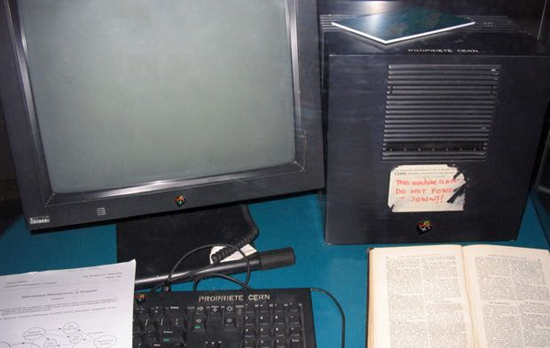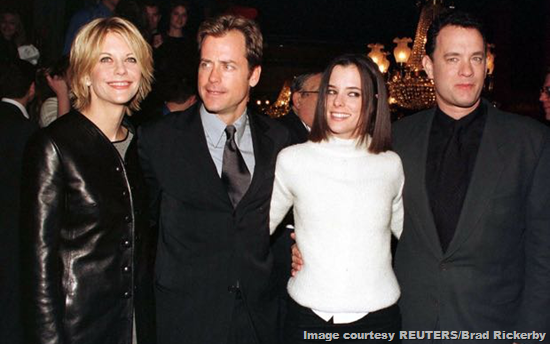
14 strange but true tech facts you (probably) don't know
By Josh Fruhlinger, IT World, 5 November 2015.
By Josh Fruhlinger, IT World, 5 November 2015.
As computers grow ever more powerful, we humans have to figure out where we still remain superior. Here's one suggestion: although the Internet is full of endless reams of data, it takes a human mind to suss through it all and determine what qualifies as interesting to other humans. Thus, we at IT World present you with the following anecdotes about technology and the Internet, guaranteed to have been selected by the human hand and eye to pique your interest. Hopefully robots won't take this job for another few years.
1. A classic Hollywood film star and an avante-garde composer helped invent Wi-Fi
Image courtesy Public domain/Wikipedia
Hedy Lamarr is a famous beauty of classic Hollywood; she was also mathematically gifted and had learned a lot of about weapons systems from her first husband, an arms manufacturer. She was friends with George Antheil, an avante-garde composer with similarly broad interests (he wrote a book on endocrinology). Together, during World War II, the two of them patented a technology that would allow radio signals to torpedoes to hop from frequency to frequency and avoid being jammed. The Navy rejected it at the time, but took it up 20 years later during the Cuban Missile Crisis, and the patent figured into the development of numerous broadcast standards, including Wi-Fi.
2. A killer may have gone free because she used Firefox
The 2011 trial of of Casey Anthony was extremely high-profile, and the police, as in virtually all murder cases, examined evidence on the computer Anthony shared with her parents, including its search history. But only after Anthony was acquitted did her defense attorney reveal that incriminating search terms involving poisoning and suffocation were present, but never brought up by prosecutors. It appears that prosecutors had carefully poured over the search history from Internet Explorer - but not from Firefox, Anthony's preferred browser.
3. A programming error led to one of the largest losses of American lives in the Gulf War
Image courtesy Darkone/Wikipedia
One of the deadliest attacks on American soldiers during the 1991 Gulf War came when an Iraqi Scud missile hit a U.S. Army barracks near Dharan, Saudi Arabia, killing 28 people. The nearby Patriot missile battery failed to intercept the Scud, and it turns out that the Patriot had a software bug: one part of its internal calculations used a decimal representation of time, and one part used a binary representation. Since the error derived in part from the Patriot's internal clock, it got worse the longer the system went without a reboot - and during the war, the Patriots were always on alert and never rebooted. The missile that hit Dharan, it turns out, was the last one Iraq fired.
4. One of the first Computer Science Ph.D.'s was earned by a nun
Mary Kenneth Keller earned her place in computer science history: she helped develop BASIC as a grad student, and received a Ph.D. from the Computer Sciences Department at the University of Wisconsin in June of 1965, which tied her for the first doctorate in computer science ever. Irving C. Tang received his D.Sc. at Washington University in St. Louis the same month, which means that, briefly, half of all holders of doctorates in computer science were female.
And, yes, to add the oddball twist to this story: Keller was a nun, a Sister of Charity of the Blessed Virgin Mary, an order dedicated to education. Keller went on to chair the Clarke College CS department for twenty years.
5. For 20 years, the passwords for U.S. nuclear missiles was 00000000
In 1962, President Kennedy was fearful that individual military commanders had too much leeway to launch a nuclear attack on their own initiative, and instituted a new policy that an eight-digit password would be necessary to launch missiles. Air Force officers, more fearful of a delayed nuclear response than a rogue commander, followed the letter if not the spirit of the rule and used 00000000 in every missile silo - and, just like half the people in your office do with their passwords, they then wrote the eight-digit sequence on a piece of paper to make sure nobody forgot. The Air Force disputes this story, but it comes from Bruce Blair, who was an Air Force launch officer in the 1970s.
6. Pål Spilling unplugged the entire Norwegian Internet in order to save it
Image courtesy Chris Chan/Flickr
Pål Spilling is a Norwegian computer pioneer whose early interest in computer networking resulted in Norway getting the first ARPANET node outside of the United States, in 1973. Fifteen years later, the nascent Internet saw its first widespread infection by self-replicating code: Morris, a worm that could install multiple copies of itself on the same computer, causing infected systems to grind to a halt. As the Morris worm began to spread in the United States, Spilling's American colleagues called to warn him; faced with a threat to his nation's entire network of computers, he acted quickly and disconnected Norway from the rest of the Internet, which at the time could be done by unplugging a single cable.
7. Amazon's name was chosen to come early in alphabetical order
Amazon is a rarity - a modern-day Web giant whose origins lie in the earliest days of the commercial Internet, a history that still marks it. Take its name, for instance. Jeff Bezos originally wanted to call it Cadabra, short for Abracadabra, to express how magical the experience of buying books from them would be. But when the lawyers he was working with to incorporate the company kept mishearing the name as "cadaver," he realized he needed to change it. It was 1995, and the number one way most people navigated around the web was with Yahoo's directory, which (prepare to have your minds blown, youths) listed names in alphabetical order. Amazon's "A" gave it a leg up.
8. The computer mouse was invented at least three times
Image courtesy SRI International/Wikipedia
In 1968, Douglas Engelbart gave what has become known as "the mother of all demos" - a demonstration of the revolutionary "oN-Line System," a computer with a GUI that set the tone for UIs as we know them today. Engelbart's demonstration included a mouse, which he had developed, as one of its primary input tools. But mouse-like input devices were developed at least twice in earlier years: by Tom Cranston and Fred Longstaff, working for Canada's Ferranti-Packard in 1952, and by Ralph Benjamin, working for the UK Navy in the early 1960s. Both earlier efforts used modern rubberized trackballs rather than the bulky wheels of Engelbart's device - and both were military projects that ended up classified, which explains why they were dead ends.
9. Your data can be corrupted by high-energy particles from outer space
Image courtesy NASA/Flickr
Semiconductor electronics have always been prone to "soft errors" - instances where a specific data bit or signal is incorrect, but the problem doesn't seem to arise from an inherent defect with the system itself. After eliminating many possible causes, researchers finally determined that some of these errors are the result of cosmic rays, high-energy particles that strike Earth from outer space and, occasionally, switch bits in the chips in your computer. Possible solutions include keeping all your high-tech equipment in an underground cave, or rebooting.
10. For more than half of its history, Nintendo only made playing cards
Image courtesy Aldaron/Wikipedia
Of all the major console manufacturers, Nintendo has the longest corporate history: it was founded in 1889, very early in Japan's modernization. However, for 67 years it had one product: Hanafuda playing cards. In 1956 Hiroshi Yamauchi, the founder's grandson, visited the United States, saw how small the world's biggest playing card company was, and decided to diversify. After several false start the company got into electronics. (At least the path from card games to video games is kind of intuitive; erstwhile Finnish cell phone giant Nokia started existence as a paper mill.)
11. Videophones have been commercially available in the U.S. since the Nixon Administration
Image courtesy Richard Diehl/Wikipedia
Just about every vision of the future for the past 100 years has prominently featured video chat, but the prospect has generally been met with tepid enthusiasm at best. The future was here in 1970 when AT&T rolled out the commercial availability of its Picturephone product. Ma Bell proudly assumed that there would be hundreds of thousands of videophones installed across the U.S. within five years, but by 1975 there were only a few hundred. Cost no doubt had a lot to do with it: service was US$160 a month - the equivalent of US$947 in 2015 dollars - and that only got you 30 minutes of video chat.
12. Nigeria, Ghana, and Bangladesh essentially skipped the landline era
Many nations, particularly in North America and Europe, put a huge amount of resources in the 20th century into connecting nearly all of their citizens to the wondrous telecommunications possibilities of the new phone network. But many poorer regions of the world, often colonized by nations in the first group, could not. Today, that legacy is clear, as fewer than 1% of homes in Nigeria, Ghana, and Bangladesh have landline connections. That doesn't mean their people are cut off, though: in all of those nations more than 85% of citizens have cell phone access.
13. The first-ever web page is still up at its original URL
Image courtesy Coolcaesar/Wikipedia
On August 6, 1991, Tim Berners-Lee posted in the Usenet group alt.hypertext about a project he was working on called the World Wide Web - or, as he referred to it, "W3," a shorthand that surprisingly never caught on. The first webpage is still there at its original address on the CERN high-energy physics lab's site, substantially unchanged - no background, no graphics, just plain text and some links to other information about the nascent Web. I'm a fan of the FAQ page, which includes links to explanations on how to create your own web server and how to get web documents if you aren't on the internet (email! you can get them via email!).
14. The marketing web pages for Space Jam and You've Got Mail are also still up at their original URLs
The 1996 Michael Jordan/Bugs Bunny vehicle Space Jam and 1998's You've Got Mail were released at the dawn of the Internet marketing age, and so it's great for future historians that both websites are still available and more or less unchanged. Both sites are marked with the aesthetic of the age - Space Jam more garish and You've Got Mail more understated, in keeping with their tones and intended audience - and they provide valuable insight into how people who were just starting to figure out this whole "Internet" thing approached it. Not quite as historically significant as that first web page, but still important, we think.














No comments:
Post a Comment
Please adhere to proper blog etiquette when posting your comments. This blog owner will exercise his absolution discretion in allowing or rejecting any comments that are deemed seditious, defamatory, libelous, racist, vulgar, insulting, and other remarks that exhibit similar characteristics. If you insist on using anonymous comments, please write your name or other IDs at the end of your message.